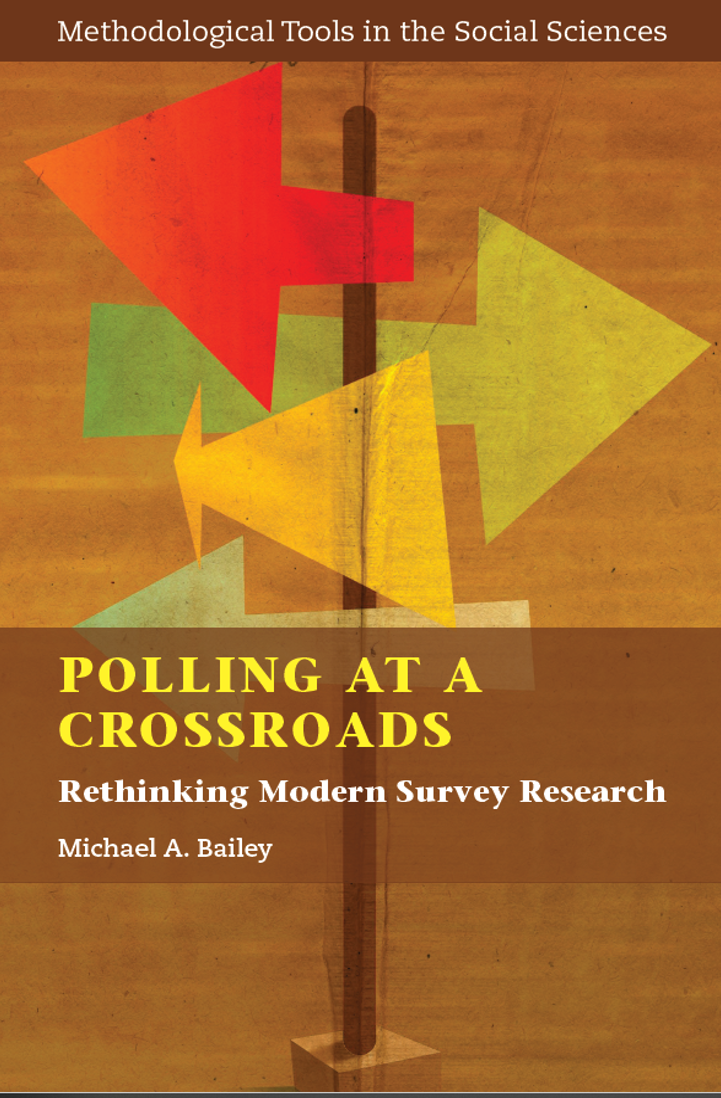Pollin g at a Crossroads
g at a Crossroads
Public opinion polling is in crisis.
Response rates of one percent or less are common and polls have missed Donald Trump’s wins – or near wins – in critical states in 2016 and 2020.
Pollsters have responded in many ways, including by abandoning the random sampling techniques that built the field. Nonetheless, most pollsters cling to an assumption that respondents are representative once we account for demographics. This was likely never true – and is almost certainly not true for today’s low-response and non-random polls.
Polling at a Crossroads presents a new paradigm for polling that confronts the full spectrum of non-response bias that confounds contemporary polling. This new paradigm not only offers a simple and sometimes counterintuitive way to think about polling as practiced, it also points us to new ways to design and analyzing surveys in ways that address the challenges of contemporary polling.
I’d love to hear what you think about the future of polling. Please reach out to Michael.Bailey@georgetown.edu.
Links
- Online appendix
- Cambridge University Press
- Amazon
- Is Polling Dead? Blog post at Fifteen Eighty Four
